
1. ASSESS YOUR AREA
Chances are that your garden is part of a street or neighborhood with other gardens close by. These gardens all provide essential cover for wildlife large and small, allowing them to move through the area, feeding, breeding and creating homes and habitats for themselves and their offspring. Instead of regarding your garden as an individual space, think of it as part of a green corridor for local wildlife. Look at what is around you in the parks and gardens nearby-are there trees, shrubs and ponds, perhaps? Look at which plants are lacking but also which plants are attracting the birds and wildlife.
2. GO FOR YEAR-ROUND FRUIT AND FLOWERS
Planting for year-round interest is great for our gardens but even better for wildlife. Many native plant species are ideal for attracting creatures, but they don't necessarily have a long season of interest, as they have adapted to make the most of specific seasons. Choosing plants with flowering times outside of spring and summer means that your garden is a potential food source for early-season hatchlings and migrating wildlife. By planting a long season of flowering and seeding plants, you'll keep bumblebees and birds very happy.
3. PLANT A TREE
هذه القصة مأخوذة من طبعة February/March 2022 من Birds & Blooms.
ابدأ النسخة التجريبية المجانية من Magzter GOLD لمدة 7 أيام للوصول إلى آلاف القصص المتميزة المنسقة وأكثر من 9,000 مجلة وصحيفة.
بالفعل مشترك ? تسجيل الدخول
هذه القصة مأخوذة من طبعة February/March 2022 من Birds & Blooms.
ابدأ النسخة التجريبية المجانية من Magzter GOLD لمدة 7 أيام للوصول إلى آلاف القصص المتميزة المنسقة وأكثر من 9,000 مجلة وصحيفة.
بالفعل مشترك? تسجيل الدخول
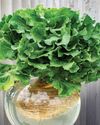
Basics of Hydroponics
Use these top tips and plant picks to have a successful soil-free garden
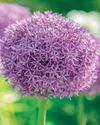
Rooted in Resilience
These hardy perennials will thrive in most zones
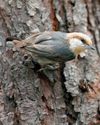
Social and Supportive
Brown-headed nuthatches take a helpful approach to raising their young

All About Owl Pellets
And why you should give a hoot about them
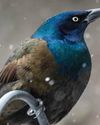
Ask the Experts
Advice from our pros about houseplants, bird feeding and more
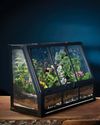
BRING THE OUTDOORS IN
Making a terrarium is about as close as you can get to a Zen DIY project. Once you have gathered the proper materials and squared away your plant selections, it's as simple as layering it all together and watching your mini ecosystem thrive. Here, I'll walk you through my foolproof process and cover all the required elements for good filtration, healthy soil, strong root growth and resistance against fungus and disease.

GROW THIS. NOT THAT
Six easy-to-grow houseplants—and six that may not be the right choice for you

Winter MAGIC
Forecasts may be frigid, but grab your binoculars because birding opportunities are still incredible

Sense or Nonsense? - Why some birds can taste and smell - but others can't
Does a porcelain berry taste like a blueberry to a gray catbird? Does a block of lard smell like frying bacon to a northern flicker? The short answer is no. While some avian species do have a well-adapted sense of taste or smell, they can't distinguish between flavors and odors the way humans can. They're not picking up every ingredient in the suet you put out, says José Ramírez-Garofalo, an ornithology researcher at Rutgers University in New Jersey and the director of Freshkills Biological Station in Staten Island, New York.

Maple Mania - Amazing facts about this fall foliage mainstay
Amazing facts about this fall foliage mainstay